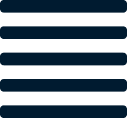With so many changes to consumer spending habits, it can be difficult to keep up with what consumers want and need. This holiday season is no different. Supply chain challenges are causing stock fluctuations, rising costs, and unmet demand across multiple industries. Combine this with an increase in consumer spending and you have the perfect recipe for uncertainty.
To stay competitive and come out financially sound, make sure you consider the following factors when demand planning these next few months.
Growth
Challenging to predict under normal circumstances, YoY growth will be a primary factor in determining the upcoming demand for your business. Experts predict holiday spending will increase 10% this year, on par with October’s close of $72.4 billion in online sales (+8% YoY). This trend seems to be in line with 2021 as a whole since e-commerce sales were up 9% over last year from January-October, and up 57% from 2019, according to Adobe's research.
Adobe also predicts that Cyber Monday will yield an increase of 4% to last year (totalling $11.3 billion) and remain the biggest day of the year followed by Black Friday coming in at +5% ($9.5 billion). These predictions seem to be aligned with a Deloitte report that predicts “holiday spending will increase by 5% from last year to $1,463 per household on average.”
With 5% YoY growth as a benchmark, the next question would be to understand where these sales are coming from. With concerns still looming over the pandemic, the portion of those planning to shop online remains the highest at 70%. Though a higher portion of U.S. consumers compared to last year do plan to shop in-store according to Coresight. Many will likely utilize curbside pickup as an option, which was used for 18% of all online orders at retailers who offered it in October (on part with LY and +6% to LLY)
While it's certainly important to have a target goal in mind, keep in mind that your actual performance will be due to the following factors.
Timing
Competition over the years has resulted in holiday promotions starting earlier and earlier. Last year, Amazon’s October Prime day set the stage for rivals to compete. Without that indicator this year, the question remains as to when is the most optimal time to begin promotions.
The answer seems to be tied to product availability more so than competition. Customers are aware of the challenges plaguing retailers. Concerns over stock availability are preparing most to shop early. Consumer studies indicate that 83% will start shopping before Thanksgiving. Some 19% even stated they started as early as August. Which makes sense according to Pinterest who stated “holiday-related searches were 43 times greater in August compared to last year.”
That’s not to say that competitive pricing and promotions won’t have an impact. With profitability and availability top of mind, businesses will need to price according to what makes sense given their position.
Pricing
Historically, those with the best deals who started early often made out. This year, with stock constraints and rising costs on nearly everything, pricing will need to take a more strategic approach. It’s likely your competition is already prepared.
According to some research, “discounts on electronics are at 8.7%, down from 13.2% at the same time last year, and sporting goods at 2.8%, down from 11.2%, while tools and home improvement items aren't being discounted at all.” And those who are offering promotions only make up about 70% of U.S. businesses, which is down 17% from last year.
Some brands may be able to offset rising product costs with subtle price increases. This can allow them to remain competitive with their offer. Though it's important to understand your customer’s price resistance first. Luxury goods, given their customer’s spending habits, can usually maintain a level of desirability with these changes in place. Take Chanel for example. Their price increases on some of their most popular handbags comes at a time when consumer demand is high and stock is low. Given their brand, this strategy has only increased their sense of exclusivity.
For all the non-Chanels of the world, pricing should be carefully assessed. Take into consideration your inventory position both now in the near future. Keep an eye on what your close competitors are doing and if there are any indicators of their inventory position (news articles, out of stocks online, job postings, etc). And finally, make sure you’re looking at the big picture of profitability. Costs from product increases and shipping changes is one thing. Coupling that with any additional costs from labor shortages will prove even more challenging.
Going forward
Nearly 75% of consumers are concerned about their holiday list going out of stock, prompting them to shop earlier this year. A likely relief for retailers, 60% of whom are worried about orders being received on time.
Guaranteeing these trends won’t continue into 2022 would be a difficult task, but with changes in port schedules and the opening of more borders, we can only hope next year will be more favorable for both businesses and their consumers.
At the end of this holiday season, retailers will likely find themselves with either more or less inventory than they anticipated. While pricing can be used as a lever to adjust demand, keep in mind some of the traditional ways to deal with unfavorable inventory levels.
In order to optimize your time and inventory planning, having a system that helps you see what's selling, where and when would be beneficial. That’s where Fuse comes in. We take care of all your inventory, from order recommendations to PO placement, so you can focus on the big picture.
.png)

.png)









.png)



%20hover.png)
.png)
hover.png)







Let us know what you think about this post
Put your comment below.